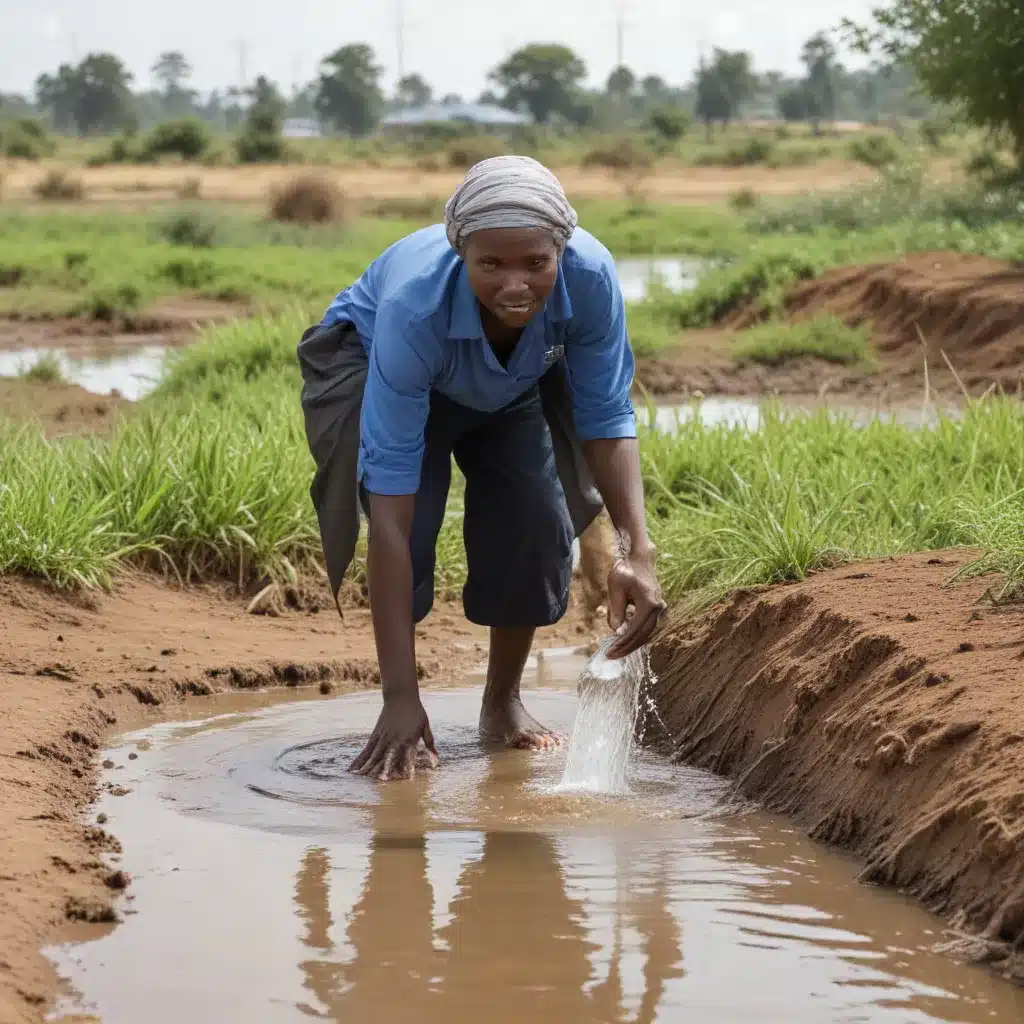
Understanding Climate Risks to WASH Systems
As the impacts of climate change become more severe, it is crucial for water, sanitation, and hygiene (WASH) systems to build adaptive capacity to withstand and recover from the challenges ahead. WASH systems play a vital role in supporting community resilience, providing essential services that safeguard public health and enable sustainable development. However, these systems are increasingly under threat from the consequences of a warming planet.
Climate change is exacerbating a range of environmental hazards that directly impact WASH infrastructure and service delivery. Extreme weather events like floods, droughts, and storms can damage water sources, treatment facilities, and distribution networks, disrupting access to safe water and sanitation services. Rising sea levels and saline intrusion threaten coastal communities, contaminating freshwater supplies. Shifting precipitation patterns and temperature increases lead to water scarcity, impacting both the quantity and quality of available water resources.
The IPCC’s Sixth Assessment Report emphasizes that climate change is the “largest global health threat of the 21st century,” underscoring the urgency for WASH systems to adapt. Disruptions to WASH services can have severe consequences, contributing to increased incidence of waterborne diseases, malnutrition, and other adverse health outcomes, especially for vulnerable populations. Furthermore, the COVID-19 pandemic has exposed the fragility of many WASH systems, highlighting the need for greater resilience in the face of shocks and stresses.
Building WASH Resilience through Integrated Risk Management
To strengthen the adaptive capacity of WASH systems, a comprehensive and integrated approach to risk management is essential. This involves:
1. Conducting Climate Risk and Health System Assessments
Gaining a thorough understanding of climate-related risks and their potential impacts on WASH infrastructure, service delivery, and public health is a critical first step. Assessments should examine exposure to hazards, sensitivity of the system, and existing adaptive capacities across all levels – from national to community. These assessments can inform the development of tailored adaptation strategies and investment priorities.
2. Fostering Multisectoral Collaboration and Community Engagement
Addressing the complex, interconnected challenges posed by climate change requires collaboration across sectors, including water, sanitation, health, environment, and disaster management. Engaging diverse stakeholders, including community members, to co-create solutions ensures interventions are responsive to local needs and contexts. This participatory approach can enhance social capital and community-level resilience.
3. Strengthening Institutional and Governance Capacities
Effective WASH system adaptation relies on robust institutional and governance frameworks that enable flexible, iterative risk management. This includes developing climate-responsive policies, regulations, and planning processes; improving data collection, analysis, and information sharing; and building the skills and capabilities of WASH professionals to anticipate, prepare for, and respond to climate-related disruptions.
4. Mobilizing Sustainable Financing for Climate Adaptation
Adequate and reliable financing is crucial for implementing climate-resilient WASH infrastructure, strengthening early warning systems, and supporting community-based adaptation efforts. Diversifying funding sources, including domestic resource mobilization, climate finance mechanisms, and innovative financing instruments, can help close the adaptation finance gap and ensure the long-term sustainability of WASH services.
Empowering Primary Healthcare for Climate Resilience
Within the WASH system, primary healthcare facilities play a vital role in emergency response and community-level service delivery. However, these frontline healthcare providers are often the most vulnerable to climate-related disruptions, such as power outages, infrastructure damage, and supply chain breakdowns.
Strengthening the climate resilience of primary healthcare is essential for maintaining essential WASH services during crises. This can involve:
- Enhancing facility readiness through disaster planning, backup power, and climate-proofing infrastructure
- Ensuring reliable supply chains for critical WASH commodities and equipment
- Investing in decentralized, renewable energy solutions to improve energy security
- Integrating climate information into disease surveillance and early warning systems
- Empowering communities to participate in preparedness and response activities
By making primary healthcare more resilient, WASH systems can better withstand and recover from the impacts of climate change, safeguarding public health and promoting sustainable development.
Leveraging Data and Technology for Adaptive WASH Systems
Enhancing the use of data and technology is a powerful lever for strengthening the adaptive capacity of WASH systems. Integrating climate information, early warning systems, and real-time monitoring can support informed decision-making and optimize resource allocation.
For example, accessing and utilizing climate forecasts, hydrometeorological data, and vulnerability assessments can help WASH operators anticipate and prepare for extreme events. Linking this information with performance monitoring of WASH infrastructure and services can enable rapid response and service restoration when disruptions occur.
Similarly, advancements in digital technologies, such as remote sensing, Internet of Things (IoT) sensors, and mobile applications, can improve the collection, analysis, and dissemination of critical WASH data. This empowers communities to actively participate in monitoring and management, while also informing policy and investment decisions at higher levels.
By embracing data-driven and technology-enabled approaches, WASH systems can become more adaptive, flexible, and responsive to the evolving challenges posed by climate change.
Conclusion: Investing in a Climate-Resilient WASH Future
Safeguarding the essential services provided by WASH systems is crucial for maintaining community health, well-being, and sustainable development in the face of climate change. Building the adaptive capacity of these systems requires a comprehensive, multifaceted approach that addresses the complex, interrelated risks and vulnerabilities.
Through integrated risk management, multisectoral collaboration, institutional strengthening, sustainable financing, and the strategic use of data and technology, WASH systems can be transformed to withstand and recover from the impacts of a changing climate. By prioritizing these efforts, we can ensure that communities worldwide have access to the safe, reliable, and resilient WASH services they need to thrive, now and in the future.
To learn more about innovative approaches to building climate-resilient WASH systems, visit the Joint Action for Water website, where experts share practical insights and success stories from around the globe.

